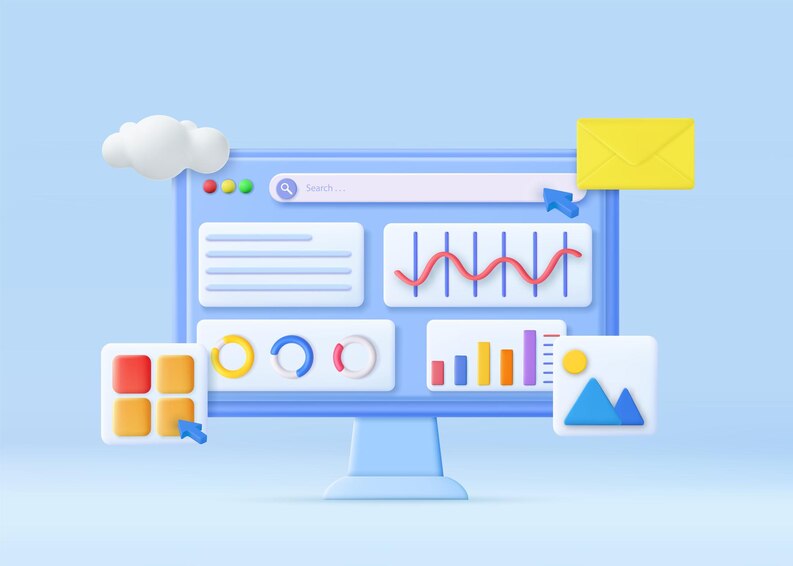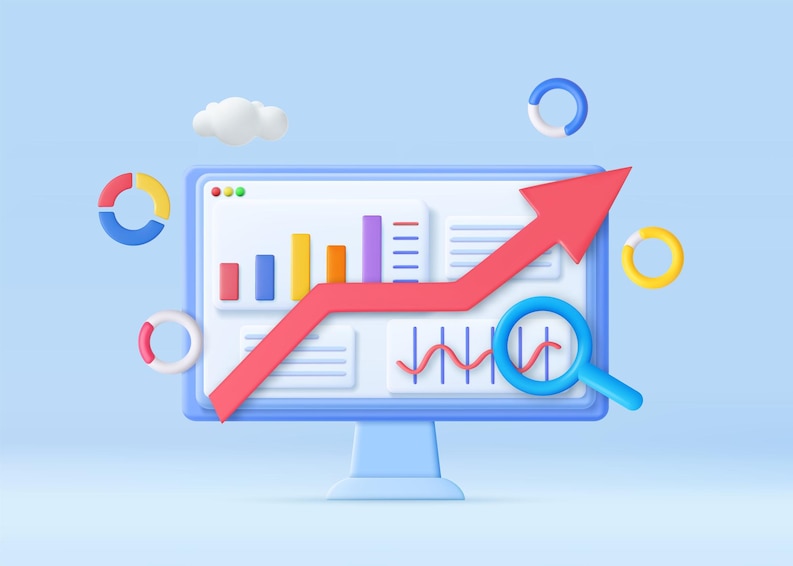Welcome to our comprehensive guide on how to measure brand awareness. In today’s competitive marketplace, understanding the visibility and recognition of your brand is crucial for success. By effectively measuring brand awareness, you can assess the impact of your brand-building efforts and make data-driven decisions to enhance your brand’s performance.
In this article, we will explore various strategies and techniques to gauge brand awareness. From quantitative measurement techniques to brand recognition analysis, brand sentiment analysis, brand recall measurement, brand perception assessment, and brand engagement evaluation, we will cover all the essential aspects of measuring brand awareness.
Whether you are a small business owner trying to establish your brand or a marketing professional aiming to track the effectiveness of your brand-building campaigns, this article will provide you with the insights and tools you need to measure and enhance your brand’s awareness.
So, let’s dive in and discover how to effectively measure brand awareness, track your progress, and stay ahead in the competitive marketplace.
Table of Contents
How to Measure Brand Awareness
Before delving into the measurement techniques, it is important to understand why measuring brand awareness is essential. Brand awareness metrics play a crucial role in tracking the effectiveness of your brand-building efforts and ensuring that you are on the right path to success.
The Importance of Brand Awareness Metrics
Brand awareness metrics provide valuable insights into how well your brand is recognized, remembered, and associated with the products or services you offer. By tracking these metrics, you can gauge the impact of your marketing strategies, identify areas for improvement, and make informed decisions to optimize your brand’s visibility.
Here are some key brand awareness metrics that can help you track the effectiveness of your brand-building efforts:
- Brand Recognition: The percentage of consumers who can correctly identify your brand when presented with your logo, tagline, or other brand elements.
- Brand Recall: The ability of consumers to spontaneously recall your brand without any prompts or cues.
- Brand Association: The extent to which consumers associate your brand with specific attributes, values, or benefits.
- Brand Reach: The size and scope of your brand’s audience, including the number of unique website visitors, social media followers, or email subscribers.
- Brand Engagement: The level of consumer interaction and involvement with your brand, measured through metrics such as social media engagement, comments, likes, shares, and website interactions.
- Brand Sentiment: The overall sentiment or attitude of consumers towards your brand, as reflected in online reviews, social media mentions, and customer feedback.
By tracking these brand awareness metrics, you can effectively measure and evaluate the progress of your brand-building efforts, identify areas of strength and weakness, and make data-driven decisions to increase brand visibility and recognition.
| Metric | Description |
|---|---|
| Brand Recognition | The percentage of consumers who can correctly identify your brand when presented with your logo, tagline, or other brand elements. |
| Brand Recall | The ability of consumers to spontaneously recall your brand without any prompts or cues. |
| Brand Association | The extent to which consumers associate your brand with specific attributes, values, or benefits. |
| Brand Reach | The size and scope of your brand’s audience, including the number of unique website visitors, social media followers, or email subscribers. |
| Brand Engagement | The overall sentiment or attitude of consumers towards your brand is reflected in online reviews, social media mentions, and customer feedback. |
| Brand Sentiment | The overall sentiment or attitude of consumers towards your brand, is reflected in online reviews, social media mentions, and customer feedback. |
By leveraging these brand awareness metrics, you can gain deeper insights into the perception and impact of your brand in the marketplace. This knowledge empowers you to make data-driven decisions to optimize your brand’s positioning, increase brand visibility, and drive business growth.
Quantitative Measurement Techniques

In this section, we will explore several quantitative measurement techniques to help you gather data and quantify brand awareness. These techniques play a crucial role in increasing brand visibility and understanding the effectiveness of your brand-building efforts. By implementing these strategies, you can gain valuable insights into your audience’s perception of your brand and make data-driven decisions to enhance your brand’s reach.
Surveys
Surveys are a powerful tool for measuring brand awareness as they allow you to collect direct feedback from your target audience. By designing well-crafted surveys, you can assess various aspects of brand awareness, including brand recall, recognition, and perception. Surveys can be conducted online, through email campaigns, or in person to gather quantitative data that provides valuable insights into your brand’s visibility.
Social Media Mentions
Social media platforms offer a wealth of information about brand awareness. Monitoring social media mentions and interactions can provide you with real-time insights into how your brand is being discussed and perceived by your target audience. By tracking brand mentions, comments, and engagement metrics such as likes, shares, and retweets, you can gauge the level of brand visibility and identify opportunities for improvement.
Website Traffic Analysis
Your website serves as a digital hub for your brand, making website traffic analysis a valuable quantitative measurement technique. By analyzing website traffic data, you can gain insights into the volume of visitors, their demographics, and the sources that drive traffic to your site. This information helps you understand the level of brand awareness and identify areas where you can optimize your online presence to increase brand visibility.
Search Volume Analysis
Search volume analysis allows you to assess how often users search for keywords related to your brand. By tracking keyword search volumes, you can measure the level of interest and brand awareness within your target audience. Rising search volumes indicate increased brand visibility, while declining search volumes may signal a need for brand awareness strategies to boost your visibility in search engine results.
| Quantitative Measurement Technique | Benefits |
|---|---|
| Surveys | Direct feedback from the target audience |
| Social Media Mentions | Real-time insights and engagement metrics |
| Website Traffic Analysis | Understanding visitor demographics and traffic sources |
| Search Volume Analysis | Measuring keyword search volumes and interest |
Brand Recognition Analysis

Brand recognition analysis plays a crucial role in measuring how well consumers can identify and recall your brand. By assessing the level of brand recognition, you can track the effectiveness of your branding and marketing efforts. In this section, we will discuss various methodologies and tools used to conduct brand recognition analysis and interpret the results.
Methodologies for Brand Recognition Analysis
When evaluating brand recognition, several methodologies can provide valuable insights into consumer awareness. These methodologies include:
- Recognition Surveys: Utilize surveys to measure the percentage of consumers who can correctly identify your brand when presented with it.
- Brand Recall Tests: Measure the ability of consumers to recall your brand without any prompts or aids.
- Association Studies: Explore the associations and connections consumers make with your brand, such as logos, slogans, or specific attributes.
Tools for Brand Recognition Analysis
There are multiple tools available that can help you conduct brand recognition analysis efficiently. These tools provide valuable data and insights, allowing you to make informed decisions to improve brand visibility. Some popular tools for brand recognition analysis include:
| Tool | Description |
|---|---|
| Google Analytics | A web analytics tool that provides valuable insights into website traffic and user behavior, including brand-related searches and referrals. |
| Social Listening Platforms | Software that monitors social media channels for brand mentions, sentiment analysis, and consumer conversations about your brand. |
| Brand Recognition Surveys | Specific survey tools are designed to assess consumers’ ability to recognize your brand and measure brand recall. |
By utilizing these methodologies and tools, you can effectively measure brand recognition and track the awareness consumers have of your brand. This analysis provides valuable insights into brand positioning, messaging effectiveness, and the overall impact of your marketing efforts.
Brand Sentiment Analysis

Measuring brand sentiment is crucial for understanding how consumers perceive and feel about your brand. By conducting brand sentiment analysis, you can gain insights into consumer attitudes, opinions, and emotions towards your brand. This analysis allows you to track brand awareness and identify areas where improvements can be made.
There are several methods available to conduct brand sentiment analysis:
- Social Listening: By monitoring social media platforms and online discussions, you can gather valuable information about consumer sentiment towards your brand. Analyzing mentions, comments, and conversations helps you assess the overall sentiment and identify trends.
- Sentiment Analysis Tools: These tools use natural language processing techniques to analyze text and determine sentiment polarity. By inputting customer feedback, reviews, and social media posts, you can quantify sentiment and gauge brand perception.
- Online Reviews: Monitoring and analyzing customer reviews on platforms like Yelp, Google Reviews, or industry-specific review sites provides insights into customer sentiment. Review sentiments can be categorized as positive, negative, or neutral to evaluate brand perception.
Benefits of Brand Sentiment Analysis
Conducting brand sentiment analysis offers several benefits:
- Identify Strengths and Weaknesses: Analyzing sentiment helps you identify areas where your brand excels and areas that need improvement. By understanding consumer perceptions, you can address any issues and enhance positive sentiment.
- Measure Marketing Campaign Effectiveness: Brand sentiment analysis allows you to assess the impact of your marketing campaigns on consumer sentiment. By comparing sentiment before and after campaign launches, you can evaluate their effectiveness.
- Track Brand Reputation: Monitoring brand sentiment helps you keep track of your brand’s reputation over time. Positive sentiment indicates a strong brand image, while negative sentiment alerts you to potential issues that may harm your brand’s perception.
| Method | Key Benefits |
|---|---|
| Social Listening | – Real-time insights – Identifying sentiment trends |
| Sentiment Analysis Tools | – Automated sentiment analysis – Scalability and efficiency |
| Online Reviews | – Customer feedback directly from consumers – Identifying sentiment patterns across platforms |
Brand Recall Measurement
Brand recall measurement plays a crucial role in assessing the effectiveness of your brand awareness efforts. It aims to evaluate the ability of consumers to remember your brand when prompted, providing valuable insights into the level of recognition your brand has achieved.
To measure brand recall, various techniques such as aided and unaided recall tests are employed. Aided recall tests involve providing consumers with prompts or cues to see if they can recall your brand from a set of options. On the other hand, unaided recall tests require consumers to spontaneously recall your brand without any prompts or cues.
The significance of brand recall measurement lies in its ability to gauge the impact of your marketing and advertising campaigns. By tracking and analyzing the results of recall tests, you can identify areas where your brand awareness may be lacking and make informed decisions to enhance your brand visibility and recognition.
A strong brand recall not only ensures that consumers remember your brand but also helps create a lasting impression that influences their purchase decisions. It is an important metric to track when evaluating the success of your brand-building strategies.
Brand Perception Assessment
Understanding how consumers perceive your brand is crucial in evaluating its overall awareness and reputation. Brand perception assessment involves gathering feedback through various methods to gain insights into consumer perceptions and attitudes toward your brand. By tracking and analyzing brand perception, you can identify areas of strength and weakness, enabling you to make informed decisions to enhance your brand’s visibility and reputation.
Gathering Feedback with Brand Perception Surveys
One effective method to assess brand perception is through brand perception surveys. These surveys allow you to collect quantitative and qualitative data from your target audience regarding their perceptions of your brand. By asking specific questions related to brand attributes, customer experience, and overall sentiment, you can gain valuable insights into how your brand is perceived.
Understanding Consumer Insights with Focus Groups
Another valuable method for brand perception assessment is conducting focus groups. Focus groups provide an opportunity for in-depth discussions and interactions with a group of consumers. Through guided discussions and open-ended questions, you can gain deeper insights into their opinions, beliefs, and perceptions about your brand. Focus groups allow you to uncover both positive and negative perceptions, helping you identify areas for improvement or potential brand positioning strategies.
Monitoring Online Reputation for Brand Perception Analysis
The digital landscape plays a significant role in shaping brand perception. Monitoring online reputation through social media listening and online review analysis is essential for understanding consumer sentiment and real-time feedback. By tracking mentions, comments, and reviews about your brand across various online platforms, you can proactively respond to customer feedback and address any negative issues. It also provides an opportunity to engage with consumers and shape their perceptions positively.
| Method | Benefits |
|---|---|
| Brand Perception Surveys |
|
| Focus Groups |
|
| Online Reputation Monitoring |
|
By combining brand perception surveys, focus groups, and online reputation analysis, you can gain a comprehensive understanding of how your brand is perceived by consumers. This valuable insight allows you to make informed decisions, refine your brand strategies, and improve brand awareness in the competitive marketplace.
Brand Engagement Evaluation
Evaluating brand engagement is an essential component of measuring brand awareness and increasing brand visibility. By understanding how consumers interact and involve themselves with your brand, you can gain valuable insights into the effectiveness of your marketing efforts and customer relationships.
To assess brand engagement, it is crucial to look at several key metrics:
Social Media Engagement
Social media platforms provide a valuable space for brands to connect and engage with their target audience. By tracking metrics such as likes, comments, shares, and brand mentions, you can evaluate the level of engagement your brand generates on social media. This data enables you to identify popular content, understand consumer sentiment, and tailor future strategies to increase brand visibility.
Website Interactions
Your website serves as a digital hub for your brand, offering various touchpoints for consumer engagement. By examining metrics such as bounce rate, time spent on the site, page views, and click-through rates, you can gauge how effectively your website captures and maintains visitor attention. By optimizing user experience and providing valuable content, you can enhance brand engagement and effectively increase brand visibility.
Customer Loyalty Programs
Establishing and managing customer loyalty programs provides a unique opportunity to foster long-term engagement and brand loyalty. By analyzing the participation levels, reward redemptions, and customer feedback within these programs, you can understand the impact of your brand on customer retention and advocacy. Loyalty program data can provide insights into the effectiveness of your customer relationship management strategies and guide you toward enhancing brand engagement.
| Metric | Definition | Importance |
|---|---|---|
| Social Media Engagement | Number of likes, comments, shares, and brand mentions on social media platforms. | Indicates the level of consumer interaction and brand awareness on social media. |
| Website Interactions | Metrics such as bounce rate, time spent on site, page views, and click-through rates on your website. | Reflects how effectively your website captures and maintains visitor attention. |
| Customer Loyalty Programs | Participation levels, reward redemptions, and customer feedback within loyalty programs. | Illustrates the impact of your brand on customer retention and advocacy. |
By evaluating brand engagement through these metrics, you can gather valuable data to refine your brand strategy, enhance consumer experiences, and ultimately increase brand visibility.
Interpreting and Analyzing Brand Awareness Data
Once you have gathered brand awareness data, it is crucial to interpret and analyze the results effectively. Understanding the key brand awareness metrics and deriving actionable insights from the collected data are essential steps to increase brand visibility. In this section, we will guide you through the process of analyzing brand awareness data, helping you unlock valuable insights to enhance your brand’s presence in the competitive marketplace.
Analyzing Brand Awareness Metrics
Brand awareness metrics provide quantifiable data that allows you to assess the effectiveness of your brand-building efforts. By analyzing these metrics, you can gain a deeper understanding of the current state of your brand awareness and identify areas for improvement.
- Reach: Measure the size of your audience and the number of people exposed to your brand. This includes metrics like website traffic, social media followers, and email subscribers.
- Impressions: Track the number of times your brand is seen or heard by potential customers. This includes metrics such as ad impressions, social media mentions, and search engine impressions.
- Engagement: Evaluate the level of interaction and involvement consumers have with your brand. This includes metrics like social media likes, comments, shares, and website engagement metrics.
- Brand sentiment: Assess consumer attitudes, opinions, and emotions towards your brand. This includes analyzing sentiment analysis data, online reviews, and customer feedback.
Deriving Actionable Insights
Once you have analyzed the brand awareness metrics, it’s essential to derive actionable insights that can drive strategic decision-making and enhance brand visibility. Here are some key factors to consider:
- Identify trends and patterns: Look for recurring patterns or trends in the data to identify what is driving or hindering brand awareness. This could be a particular marketing campaign, a specific channel, or a particular target audience segment.
- Compare against benchmarks: Compare your brand awareness metrics against industry benchmarks or your historical data to understand how you stack up against competitors or your performance over time.
- Segment data: Segment the data by demographics, geographic location, or customer segments to identify variations in brand awareness across different groups. This can help you tailor your marketing strategies more effectively.
- Monitor changes over time: Regularly track and monitor brand awareness metrics to identify any shifts or changes in consumer perception. This will help you stay proactive and make adjustments to your brand strategy as needed.
By effectively interpreting and analyzing brand awareness data, you can uncover valuable insights that will inform your brand-building strategies and help increase brand visibility. The next section will provide a comprehensive conclusion to our exploration of measuring brand awareness, summarizing the key insights and takeaways from the entire article.
Conclusion
In conclusion, measuring brand awareness is a critical aspect of assessing your brand’s visibility and recognition. By utilizing the strategies and techniques discussed in this article, you will be equipped with the necessary tools to measure, track, and enhance your brand’s awareness in the competitive marketplace.
Understanding the importance of measuring brand awareness allows you to have a clear understanding of how your brand is perceived by consumers and the effectiveness of your brand-building efforts. It enables you to identify areas for improvement and make informed decisions to increase brand visibility and recognition.
By implementing quantitative measurement techniques such as surveys, social media analysis, and website traffic analysis, you can collect data to quantify brand awareness. Additionally, conducting brand recognition analysis, brand sentiment analysis, brand recall measurement, brand perception assessment, and brand engagement evaluation provides valuable insights into various aspects of brand awareness.
Remember, interpreting and analyzing brand awareness data is crucial to derive actionable insights. Continuously monitoring and evaluating brand awareness metrics will help you make informed decisions and adapt your brand-building strategies to stay ahead in the competitive market landscape.





Comments are closed.